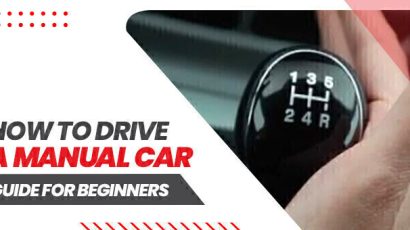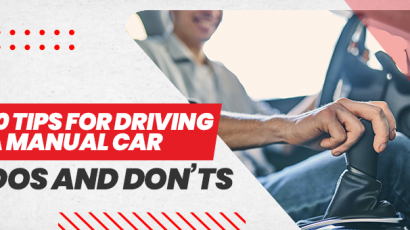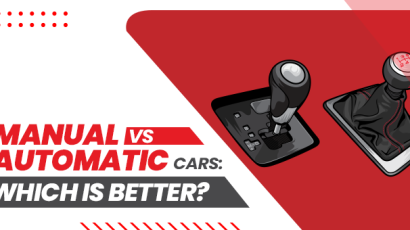
Driving a manual car in South Africa is not as challenging as it looks. As a matter of fact, it is quite easy if you are familiar with the basic information of shifting gears. In my honest opinion, the best way to learn how to drive a car is by taking proper lessons from a driving instructor or, more importantly, by practicing on your own.
With regular practice, you can easily master the art of shifting gears without using your brakes too much. Driving a manual car is unquestionably one of the most essential life skills to learn today. It does not require any rocket science. In conclusion, just a bit of attention and consistency can help you master these driving skills.
What To Know About Driving A Manual Car
Before you start, you must remember that manual cars come with 3 pedals, which include the accelerator, brake, and clutch (in that order, right to left). Now, without further delay, let us learn how to drive a manual car in South Africa.
Step 1 – Learn About Your Car
The first thing you must do in order to learn how to drive a manual car is to learn about the specifications of your vehicle. Usually, the cars have about 4 to 5 speeds and a single reverse gear. Learn about the functions of each gear and the positions of the pedals.
For instance, the acceleration pedal is located at the far right of your car. It works along gears in order to provide the engine with different levels of power. The clutch pedal is located on the far left of the car. However, the drivers use the pedal to shift between the gears.
It is why your acceleration foot and the clutch foot will work almost simultaneously whenever you shift into gear. In addition, you will require acceleration to move forward and the clutch to shift the gear.
Step 2 – Learn The Positions Of Each Gear
You must learn to shift the gears and never forget to push the clutch every time you change between them. If you fail to make the clutch pedal or do not press it properly while shifting the gear into position, a grinding sound will start coming from your car, indicating that your car is not in gear.
Step 3 – Track Down The Ignition
For the sake of starting your car, you must track down the ignition. Usually, the ignition is situated right next to your car’s steering wheel. However, some vehicles also have a push-to-start feature, so make sure to confirm the location through the owner’s manual if you can’t find the ignition.
Once you have tracked down the ignition, turn it halfway to allow the sensors of your car to take their readings.
Step 4 – Start Your Car
Always make sure to put your car into neutral before starting it. By doing so, you will make sure that your car does not jump while starting. However, as an alternate, you can also start your car in gear along with the clutch pedal being pushed to the floor, then shift the gear to neutral, release the pedal, and allow your car to warm up.
Step 5 – Use The Clutch
Controlling the clutch can be extremely frustrating for first-time drivers, so allow yourself some time to crack the code. It is important to remember to always keep your right foot on the gas and brake while placing your left foot on the clutch pedal.
Another useful tip is never to press the clutch for more than a few seconds when at a traffic signal. Instead, it is advised to put your car into neutral while stopped.
Step 6 – Upshifting
Driving a manual car is basically about determining when the acceleration pedal comes up and the clutch pedal goes down. It’s the magical place where the gears shift and the car accelerates.
Step 7 – Downshifting
When you shift to lower gears while slowing, your car’s speed is now downshifting. Downshifting has several benefits. It allows you to slow your car. However, it also helps you put in the right gear for slow speed. Basically, downshifting is your best friend when driving in bad weather, on downhills, or in any place where it is dangerous to take immediate breaks.
When you are downshifting, shift your foot from the clutch pedal to the brake pedal while remaining in gear. By doing so, your car will slow down without revving too much between the gears.
Step 8: Practice Reversing
As the name specifies, the reverse gear helps your car in moving to a backward direction. Usually, the driver uses reverse gear to turn around or park the car. It would help if you shifted the gear stick to the R position to get your car to reverse. However, it is important to remember to take this step only when your car is not moving at all.
Step 9: Practise A Lot
Driving a manual car can be tricky at first, but as soon as you get to hold it, it will become quite easy. The main thing that will help you to learn how to drive is practice. Practice as much as you can. Start practicing in empty parking lots, then gradually practice on quiet roads and transit to trafficked roads whenever you feel confident enough to do so. You will be driving like a pro within no time.
Step 10: Give Yourself A Pat On The Back
Learning how to drive a manual car requires full attention as it is a complicated process. More than a lot of people have failed to acquire this skill, and a majority of people cannot get it right on their first or even second attempts.
The main thing that matters is you will eventually get a hold of it; just don’t disappoint or discourage if you are unsuccessful. Just stay persistent, and you will definitely get your reward in the form of being able to drive a manual car.
Final Thoughts
If you want to learn how to drive a manual car in South Africa, this guide has all the necessary information for you. The instructions described are sufficient enough to get you started with your learning.
Remember that learning to drive a manual car is a lifetime skill, and you might need some time to master it. Keep practicing, stay persistent, and do not get disappointed. Once you get used to driving a manual car in South Africa, there will be no turning back.











